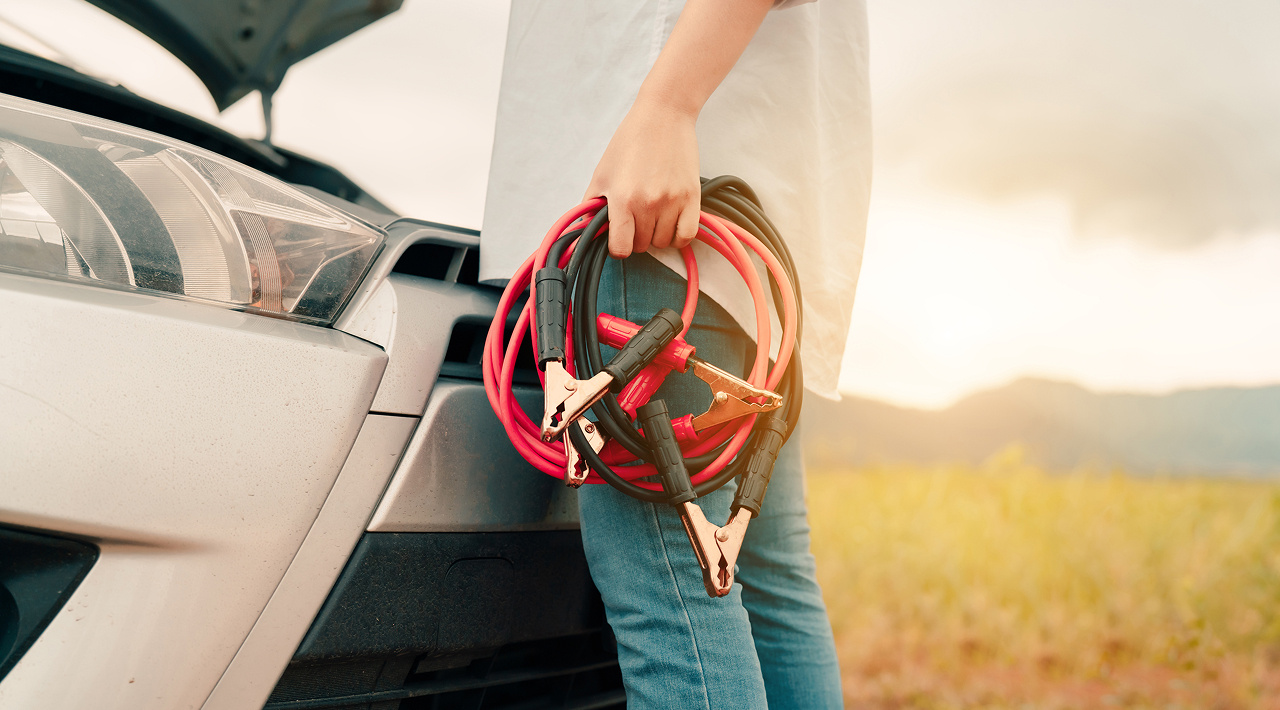If your car has a flat battery, it could be very useful to understand how to jump start it, but it’s also important to know what you’re doing or the jump leads could potentially damage the vehicle, not to mention pose a threat to your safety.

Read on for tips on how to jump start a car, but remember, if you’re not confident or comfortable with what you’re doing, it’s always more sensible to call a roadside assistance service to help you.
Jump starting a car is something you may want to consider if the battery in your vehicle is flat. To jump start a car, you will need three things. Firstly, a pair of working jump leads. Secondly, a pair of rubber work gloves (for your safety) and thirdly, another vehicle with a fully charged battery (not a hybrid or electric car as using one of these to jump start another car could potentially damage the EV’s battery). Also, the working car must have a battery with the same voltage as that of the flat battery (usually 12 volts).
It's important to remember that you should never attempt to jump start a battery that appears to be damaged or leaking. Also, if the jump leads show signs of damage or begin to heat up during the process, they should be discarded.
Before attempting the jump start, make sure the area around both vehicles is clear and that you are not wearing any dangling clothing (e.g. a tie or scarf) that could get caught in the engine. Also, remove any metal jewellery and do not allow anyone to smoke in the vicinity.
Once you have made sure the area is secure, line up both cars but leave the handbrakes and ignition of both vehicles switched off for now.
Connect the red jump lead from the working battery’s positive terminal to the flat battery’s positive terminal. Do not allow the ends of the red and black leads to touch. Connect the black jump lead to the negative terminal on the working battery and the other end to an earthing point well away from the flat battery and fuel system.
Keep both engines off and wait for a few minutes before starting the working car’s engine and letting it run for one minute.
Turn on the ignition of the car with a flat battery and leave both cars to run, at a fast pace, for about ten minutes.
Turn off both engines and carefully disconnect the leads in the reverse order, again making sure they don’t touch.
Try the ignition of your car to see if it will start. If it doesn’t, there may well be a more serious problem such as the need for a replacement battery.
In short, yes, you can jump start an automatic car. Before attempting to do so, check the vehicle’s owner’s manual for guidance. Follow the steps outlined above carefully.
It is not possible to push or bump start an automatic car because an automatic car has an open clutch, which makes the classic push or bump start manoeuvre impossible.
In addition to some of the safety tips mentioned above, make sure the bonnets of both cars are secured in the upright position before attempting a jump start.
Park your car away from traffic to minimise any potential hazards.
Never touch the ends of the red and black leads as this could create sparks that could hurt you or damage the vehicles.
Jump starting a car is a relatively uncomplicated procedure if you’re really stranded somewhere and it is your only option. Having said that, there are plenty of potential risks, both to the vehicles and more importantly to your safety if the process is carried out incorrectly.
In most cases it is better to ask a professional mechanic to remedy the problem. When you lease a car from Leasys it will come with a number of services as standard, such as roadside assistance and a dedicated helpline to ensure you never get stranded.
Our competitively priced optional maintenance packages also make sure your car is serviced regularly, helping prevent any problems before they occur, giving you peace of mind. Contact a Leasys customer care advisor today to find out more.